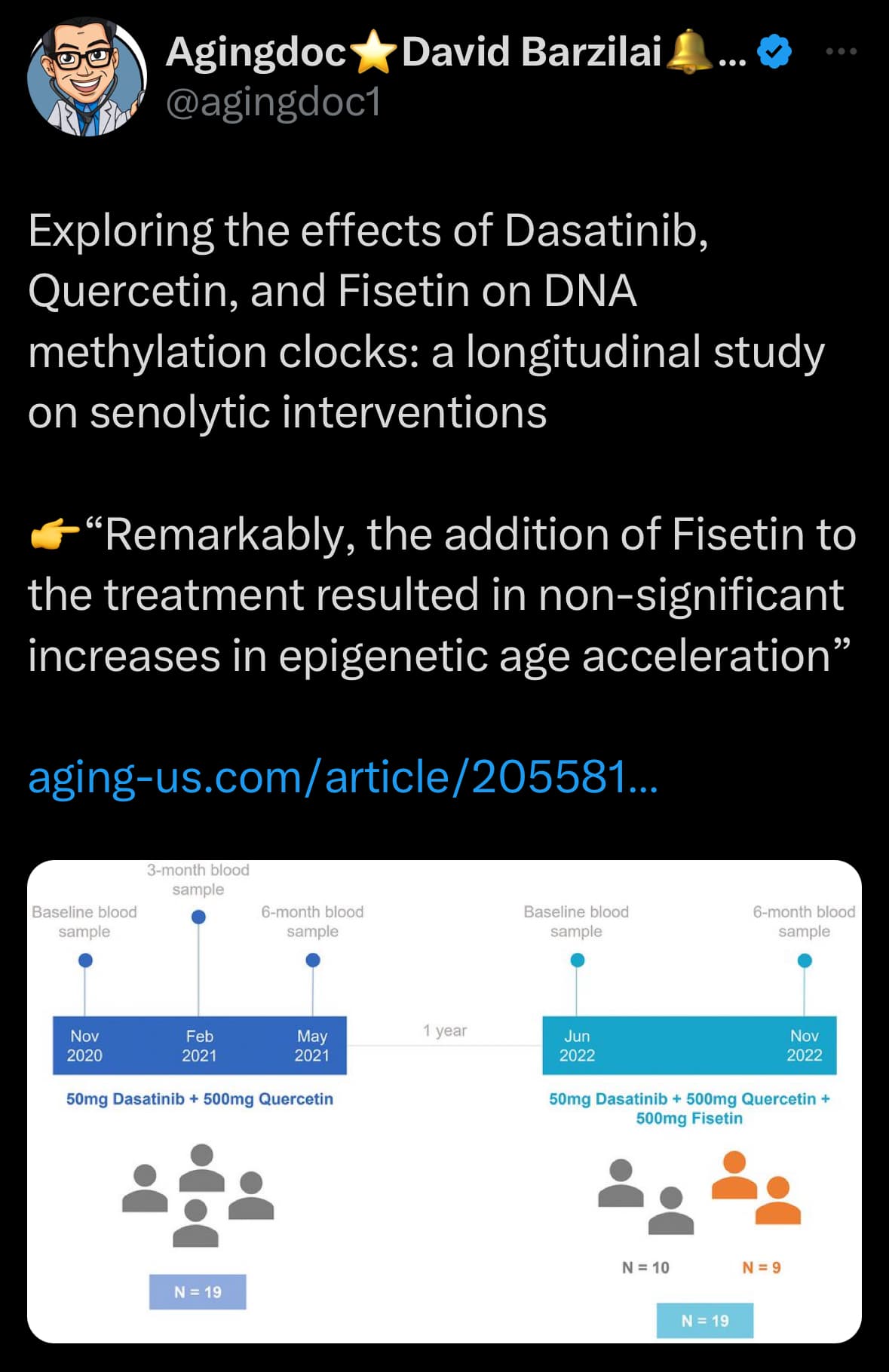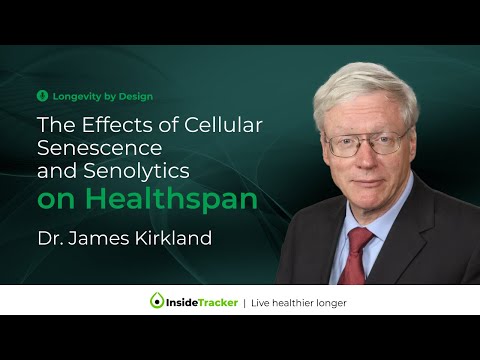@John_Hemming Thanks. That makes sense.
I think there is a substantial difference when it comes to how fisetin is administered.
- The ITP gave it through the food.
- Kirkland and others have mostly focused on high doses given intermittently.
I think this difference is something to consider. Personally, First I take some black pepper and then I take fisetin 30 - 40 mg/ kg body weight, consumed with canola oil.
The first time I did these treatments, I got a profound effect. First pain relief, increased sex drive and muscle weakness. After a few days, I got a strong rebound when it comes to muscle strength.
Now, after a few years with taking this 3–4 times a year, the effect from this kind of treatment is reduced. But it still gives me an increased sexual stamina, some pain relief and increased wellbeing for a few days.
I’ll continue doing it. Now, I often mix the fisetin treatments with other substances that are claimed to be “Senolytic”. Quercetin, piperlongumine, theaflavines
The ITP does check whether the compound in question does get absorbed into the bloodstream so it’s not an issue of bioavailability.
Imo fisetin failed in all regards and is a dead end.
This has been discussed before;
I use Azithromycin.
What dose? What is your protocol?
What is your protocol, weekly, monthly, semi-annually?
Once a quarter{ever 3 month/12 weeks]
I do the modified DAV therapy/procedure, as was discussed in the other thread
For one week/seven days
250mg of azithromycin once ever 72 hours
100mg of doxycycline twice a day{100mg every 12 hours]
And 2.4g of vitamin C - I use fat soluble, a mix of liposomal C and ascorbyl palmitate {AP] - 4 to 6 hours after taking either the azithromycin or the doxycycline.
A slightly modified version of Professor Michael Lisanti published paper.
and
I have upped my dose of taurine to 8 mg a day in my afternoon coffee along with 2 g of magnesium citrate. The dosing is based on the taurine video in the taurine linked below. I try to space it 4 hours after my Glycine and collagen coffee to avoid receptor conflicts.
Although caffeine also blocks the taurine receptor, there were studies that showed them to have synergistic qualities as well. I also need the strong taste of coffee to cover up the not so pleasant taste of taurine.
How long the aftertaste last?
The taste of taurine isn’t too bad. It’s just mildly unpleasant. So coffee covers it well. A smoothie would work too. I just don’t like it in plain water.
Thanks Chris! Then we should optimize for impact and not count the taste?
Yes. Optimize for impact.
Can you expound a bit more?
Watch the video I linked 4 posts above this one. It’s the best guide to taurine I have found yet. It discusses the best dose to take based on our current knowledge.
A new video:
Dr. Kirkland shares insights into the science of cellular senescence and how targeting these cells could revolutionize the treatment of age-related chronic diseases. He sheds light on the mechanisms behind senolytics and their promise for extending healthspan. The discussion also touches on the importance of lifestyle factors like diet and exercise in managing senescent cells. Dr. Kirkland also discusses geroscience, a research paradigm that seeks to understand the mechanisms that make aging a major risk factor for and driver of common chronic conditions and diseases of older people. This knowledge can be used to slow the rate of aging, reverse its effects, delay or even cure age-related diseases, and extend healthspan. The conversation also highlights the emerging evidence and potential of using gerotherapeutics (treatments) that target aging biology to combat aging-related diseases and increase healthspan and lifespan. Dr. Kirkland also covers the challenges and opportunities in translating these scientific discoveries into clinical applications, emphasizing the critical role of interdisciplinary efforts in advancing our understanding and management of aging. This is an enlightening episode with Dr. Kirkland on aging research and the opportunities to revolutionize healthcare by combating aging-related diseases and increasing people’s healthspan and lifespan.
Introduction: 00:00-03:49
What led Dr. James Kirkland to become a physician-scientist and become interested in aging research?: 03:50-05:24
What is geroscience, and what are fundamental aging processes?: 05:25-09:17
What are the differences between targeting aging vs. the traditional medical system of waiting to treat illnesses or diseases after they occur?: 09:18-12:39
What are gerotherapeutics, and what is their relevance for healthspan and lifespan?: 12:40-16:10
What are senescent cells? What is the impact of senescent cells on the body and aging: 16:11-26:39
What are senolytics? How do senolytics work to target senescent cells to remove them?: 26:40-35:05
How Dr. James Krikland discovered senolytics such as fisetin, quercetin, and dasatinib? What clinical trials on the effects of senolytics in humans have been done? 36:06-40:47
Discovering biomarkers for senescent cells: 40:48-42:37
What are some important factors to consider on the effects of gerotherapeutics and senolytics on lifespan and healthspan in model organisms compared to humans?: 40:38-47:39
The potential for geroscience and gerotherapeutics, such as senolytics, to transform healthcare. What is the importance and what are some challenges of conducting clinical trials on gerotherapeutics, such as senolytics, to improve healthspan in humans?: 47:40-56:15
What is the Translational Geroscience Network, and what are its goals?: 56:16-01:02:01
How might senolytics be used clinically in the future if proven safe and effective? What conditions might they benefit?: 01:02:02–01:05:57
What are the effects of lifestyle, such as diet and exercise, on senescent cells?: 01:05:58-01:06:52
What excites Dr. James Kirkland the most about the potential for extending people’s healthspan and lifespan with therapies, drugs, or interventions in the coming years?: 01:06:53-01:07:41

